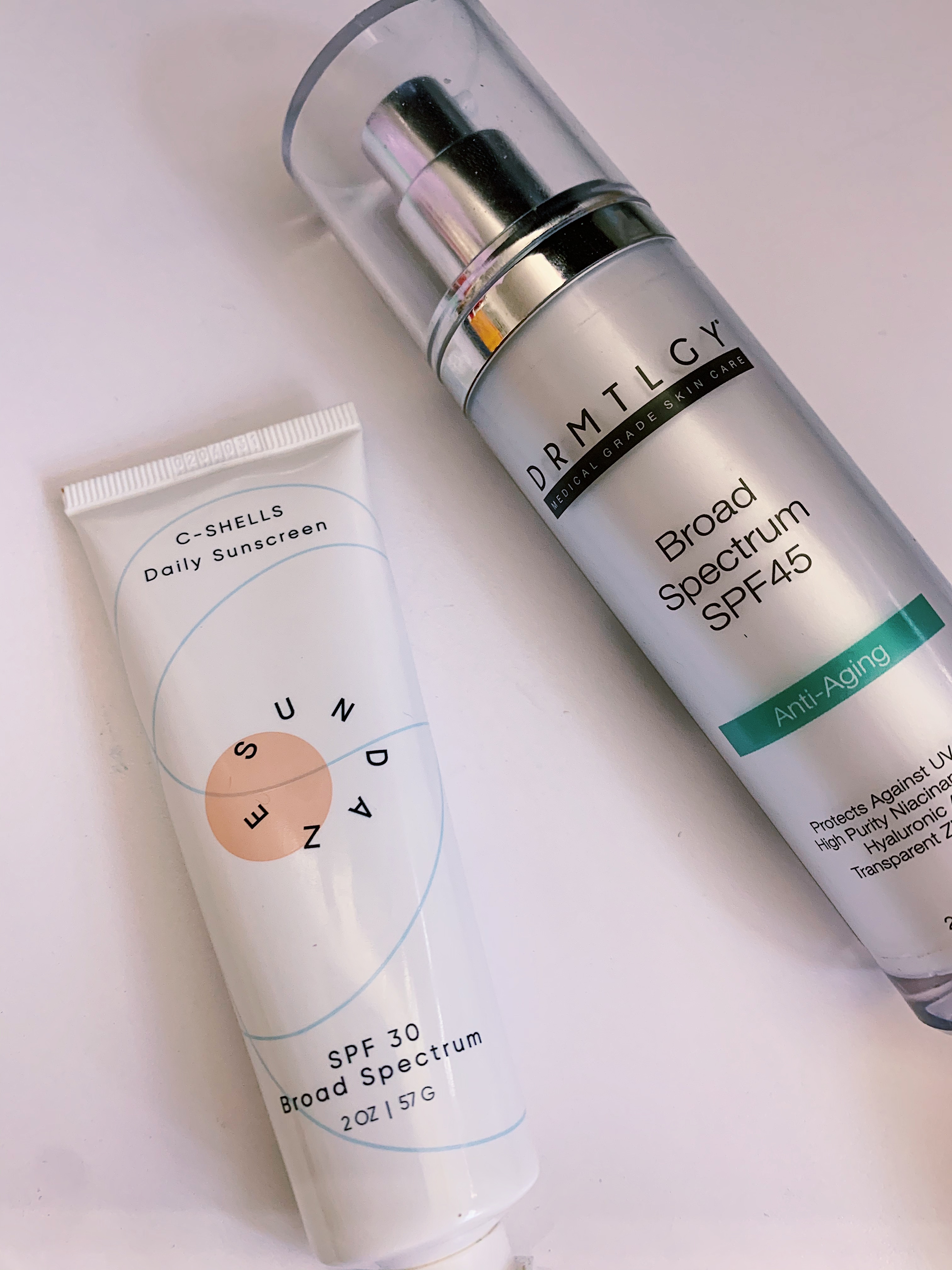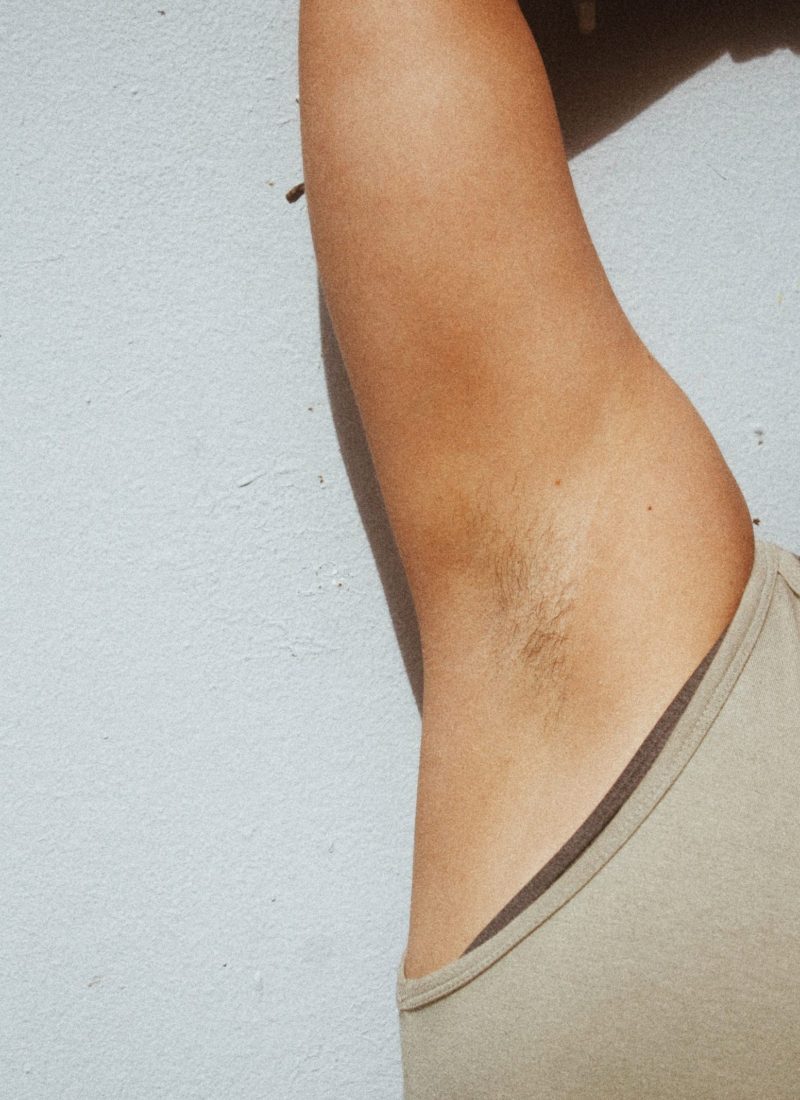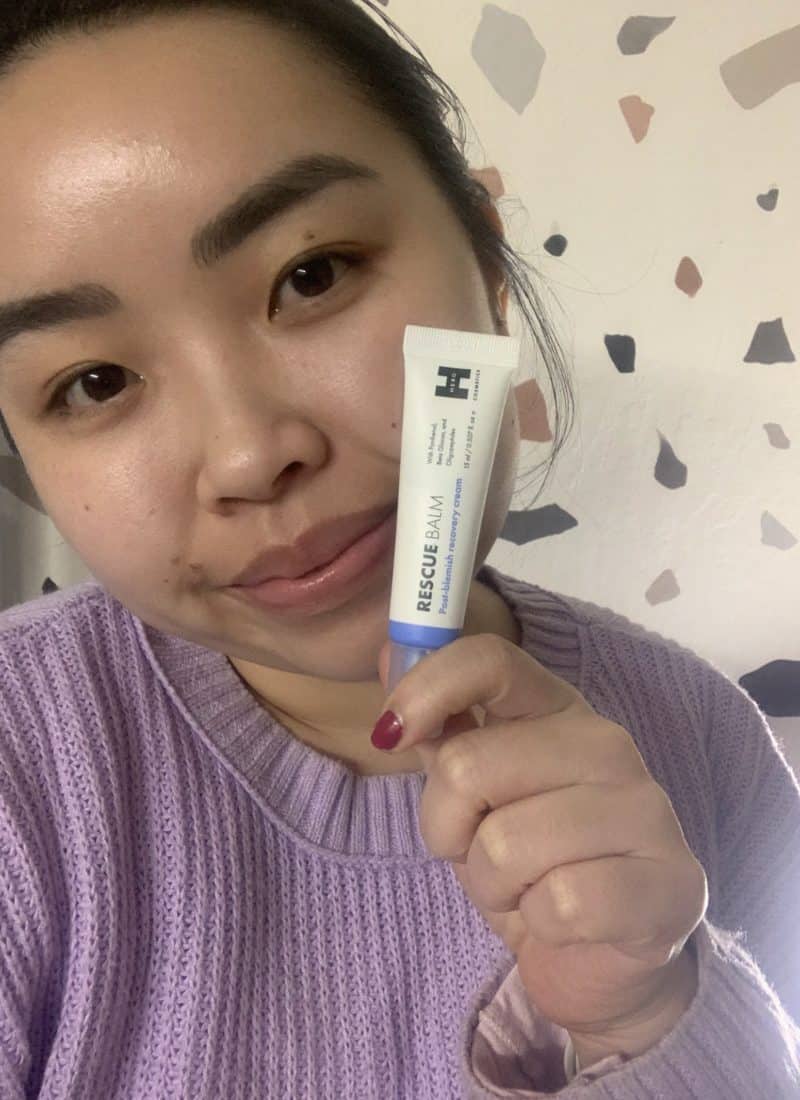We’ve all been there. Standing in an aisle at Ulta, Sephora, or Target, staring aimlessly at the never-ending shelves of product, asking yourself “What’s a toner?” or “Do I really need a serum?”. The world of skincare has become complex and intimidating, so if this is you – I’m here to help. Here’s a play-by-play on building your very first skincare routine.
First of all – there’s only one truly essential step in skincare: sunscreen.
No matter what people try to sell you, your skin is a fully functioning organ (the largest one, in fact), and the only step you really need is proper sun protection. Sunscreen helps to protect your skin against UVA & UVB rays, which are the #1 sign of aging. So find a sunscreen you love, and wear it daily. More on that to come!
However, there are lots of benefits of having a solid skincare routine, and I always recommend starting out with three core steps: cleanse, moisturize, and sun protection. These three steps are the key components to a basic skincare routine, and I recommend sticking with this for at least a month before adding in other products to specifically target certain skin concerns. A habit takes 21 days to create, so once you make your simple skincare routine a habit, you can start incorporating new products as you need. Even if you decide to move to a more extensive skincare routine, I always recommend going “back to basics” when your skin is irritated and inflamed, so it’s important to have these three staple products in your routine at all times.
First Up, Cleanser

Cleansing is my favorite step in a skincare routine – it’s always satisfying washing off the dirt and oils from the day.
If you wear makeup, check out my guide on how to remove makeup without wipes.
For cleansers, I’d recommend going with a “no-frills” option that gives a good cleanse without drying or stripping your skin. I typically recommend avoiding cleansers with surfactants like SLS or SLES (Sodium Lauryl/Laureth Sulfates) as these tend to be more stripping, but use what feels best for your skin. When using your cleanser, your skin should never feel tight or dry. If it does, you might not be using the right cleanser for your skin type.
There are definitely some amazing cleansers that can work well for all skins, but you may prefer a different type of cleanser depending on your skin type. If you have dry skin, you may want to consider looking for a milk or cream-based cleanser that will help hydrate and nourish your skin. If your skin is on the oilier side, a gel or foaming cleanser may be your best bet. Gel cleansers tend to be a bit more “deep cleaning”, so they can help balance your oils.
In terms of price point, there’s a huge variety of cleansers out there on the market. There are amazing cleansers at all price points – I’ve fallen in love with cleansers under $20, and I also have some favorites that are closer to the $50 price point. It’s all about finding a product that works well for you and your skin type. When you’re first starting out, I recommend looking for a gentle cleanser option. Using gentle products as you start out is important as you don’t want to aggravate your skin barrier. There are other types of cleansers, like ones with exfoliating acids, sulfur, benzoyl peroxide, and other ingredients that can help treat specific skin concerns, but I recommend starting with a gentle cleanser, and then you can consider other options once you get into the swing of your routine.
Product Recommendations:
- All Skin Types: Vanicream Facial Cleanser
- Dry Skin Types: La Roche Posay Hydrating Gentle Cleanser
- Combo/Oily Skin Types: Hero Cosmetics Clear Collective Cleanser
- For more affordable cleanser options, check out my Drugstore Cleanser Review
Step 2: Moisturizing

Before any of my oily skin friends say anything, all skin types need moisture, even if you’re super oily or acne prone. Besides providing much-needed moisture to the skin, the moisturizing step in your skincare routine provides a protective layer between your skin and the environment. Like cleansers, there are hundreds of thousand of moisturizers on the market, so it’s difficult to figure out what to look for! I recommend looking for hydrating ingredients like glycerin to help draw moisture into the skin, along with more nourishing/strengthening ingredients like ceramides or facial oils. Having a combination of hydration and nourishment will help keep your skin hydrated while keeping your skin barrier happy and healthy.
When it comes to finding the right moisturizer for you, it boils down to a few things: your texture preference (gels, lotions, richer creams, etc.) and your skin type. For dry skin, I tend to recommend richer creams that have more occlusive ingredients, like shea butter, to nourish the skin and replenish oil. Oilier skin types may prefer more water-based or gel moisturizers that feel lightweight and sink in quickly. More normal skin types tend to prefer something in the middle – emulsions or light lotions that help keep the skin well balanced. I recommend looking for a moisturizer that keeps your skin well hydrated without feeling dry or oily by the end of the day. Some people prefer having a different moisturizer morning and night (like me!), but it’s all about your personal preference.
Like cleansers, there are moisturizers at all price points in the market – there are amazing options at the drugstore and some more high-end moisturizers that might be worth the splurge! I don’t think you need to break the bank with moisturizers (looking at you, La Mer), but if you love a luxury product, I say go for it! It’s just not a necessity to spend a lot on this step of your routine. I recommend finding your preference for texture (gel, cream, lotion, etc.) and find a gentle one that leaves your skin feeling balanced and well hydrated.
Product Recommendations:
- Normal Skin Types: Stratia Liquid Gold
- Dry Skin Types: Embryolisse Lait Creme Concentre (Full Embryolisse Lait Creme Concentre Review)
- Combo/Oily Skin Types: I’m From Mugwort Cream
The Most Important Step of a Skincare Routine: Sun Protection

Not to be dramatic, but there’s truly no need to do any other step in skincare if you’re not going to apply sunscreen, it’s all pointless if you don’t protect your skin. I always recommend SPF 30+ (ideally closer to SPF 50) every day to provide proper SPF protection to prevent skin cancer and sun damage (yes, even in the winter, and even when you’re inside all day). The best sunscreen is one that you will use every day. I know that a lot of sunscreens feel thick, chalky, and can leave a white cast, but sunscreens have come a long way! There are amazing sunscreen options at a variety of different price points. I have lots of favorites that are under $25! There are some more luxurious sunscreens that I enjoy as well, but I go through sunscreen quickly, so I like to go for more affordable options.
There are two main types of sunscreen filters: chemical vs physical sunscreen. More sensitive skins may prefer a physical/mineral-based sunscreen (zinc-oxide or titanium dioxide), which can be a bit gentler on the skin. I personally tend to experience stinging around my eyes with chemical sunscreens, so I usually gravitate towards mineral sunscreens. However, there are some amazing chemical-based formulas that can work well for all skin types as well. Mineral-based sunscreens tend to be a bit thicker and can leave more of a white cast on the skin, whereas chemical-based sunscreens tend to feel lighter and have little to no white cast. I personally love sunscreens that use a combination of mineral and chemical sunscreens. They are not as sensitizing but tend to be more lightweight and have less of a white cast in comparison to fully mineral sunscreens. Look for a formula that feels comfortable on your skin, and reapply every two hours (especially when you’re in the sun). It can be challenging to reapply sunscreen regularly, but I have a blog post that can help!
Learn more about how to reapply sunscreen in this blog post.
Some people ask, “is the SPF in my makeup enough?” – the answer? Usually not. Even if a makeup product has above SPF 30, you need to apply at least 1/4-1/2 a teaspoon for proper protection, and most people don’t apply anything close to that amount. It’s better to use a designated sunscreen for full protection, and the SPF protection in your makeup can be an added “bonus”. If you prefer using moisturizers with SPF, that’s also an option – but again, it’s important to ensure you’re applying enough product to get adequate protection.
Product Recommendations:
- Mineral: Live Tinted Hueguard SPF 30
- Chemical: Supergoop! Unseen Sunscreen
- Mineral + Chemical: DRMTLY Tinted SPF 46, Broad Spectrum SPF 45 Learn more on my Drmtlgy Sunscreen review!
And there you have it! The core steps to a simple skincare routine. These three steps are the pillars to a basic skincare routine, and once you get these down, you can start (slowly!) incorporating specific products to target specific skin concerns.
“Nice to Have” Products
I wanted to break down some extra, “nice to have” products that you can add to your routine once you get your basic routine down. I’ll be breaking down some of the main skincare categories here, but just a reminder that these steps are not necessary and shouldn’t be incorporated until you are consistent with your core routine. I recommend only adding one or two new products to your routine at a time, and being very intentional with what you decide to add. For example, if you want to target clogged pores, start by adding in an exfoliating products a few times a week instead of adding in an exfoliator, scrub, and mask.
Toner
Toners were traditionally used in skincare to help balance your skin’s pH after using harsh soaps/face washes. However, skincare innovation has come a long way (thank goodness), and you don’t really need to “balance your pH” anymore. Nowadays, there are two main types of toners: exfoliating toners (I call these “exfoliators”), and hydrating toners. You’re probably wondering, what is a toner, and do I really need one? I personally enjoy using hydrating toners for an extra layer of hydration before the rest of the steps in my skincare routine. Skincare products absorb more easily on damp skin, but you can honestly just leave your skin damp after cleansing!
Exfoliators
Now let’s talk about exfoliators. There are many exfoliating acids on the market – AHAs, BHAs, and PHAs, and each one works a little differently than the other! Exfoliators also come in many formats: exfoliating toners, exfoliating serums, exfoliating masks or peels, and more. These aren’t a necessity in a routine, but if you’re looking to target clogged pores, uneven skin texture, pigmentation, etc., they’re a great addition! Just be cautious to not overdo it by introducing exfoliating acids slowly into your routine, and only using them 2-3 times a week to avoid over-exfoliation. Overdoing it on acids can lead to a compromised skin barrier and other issues over time.
Learn more about physical vs chemical exfoliation in this blog post!
Serums
Serums are typically the “splurge” item in my routine. These tend to be more targeted, concentrated treatments that you can use to target specific skin concerns. There are a LOT of serums on the market, but I remember sticking with no more than one or two. Overcomplicating your routine is honestly not a necessity – a lot of times in skincare, less is more. I recommend looking for serums based on their main purpose vs by “name”.
For example, you could look for soothing/calming serums or brightening/antioxidant serums (like vitamin c). A lot of brands like The Ordinary and The Inkey List sell targeted “treatment” serums that have a focus on singular ingredients like hyaluronic acid and niacinamide. However, I find that multi-purpose, targeted serums tend to be more effective in a routine vs. “singular ingredient” serums.
Retinoids
Retinoids are known as the gold standard for treating acne and signs of aging. There are a wide range of retinoids – from gentle retinol products you can buy over-the-counter, to prescription-strength retinoids like tretinoin.
Want to learn more? I have a blog post detailing the difference between retinol vs retinoid!
Retinoids work by resurfacing the skin, speeding up your cell renewal process, and stimulating collagen production in the skin. They’re one of the most well-tested ingredients in skincare, and they are very commonly recommended by dermatologists to treat a multitude of skin concerns, most notably signs of aging. There are amazing retinoid options that are affordable, and other ones that are a bit of a splurge – it’s all about finding what works best for you!
Here’s a guide on when to start anti aging skincare.
Face Oils
These are some of my favorite “additional” products. I love a good facial oil because they are super nourishing, are a great way to “boost” your moisturizer, and many oils are full of fatty acids that help to keep your skin barrier strong. I don’t consider face oils a true “replacement” for moisturizer, but they’re a great way to add extra nourishment,. There are a lot face oils on the market – single oils like rosehip oil, as well as “cocktails” of oils. You’re probably wondering, what’s the difference between different types of oils? They each have different vitamins and fatty acids, so it’s all about finding what works best for you and your skin.
Face oils are a great way to treat the dry skin around nose and other areas of your skin!
Eye Cream
Do you really need an eye cream? Not really, regardless of what the magazines you read as a teen may tell you. I like using eye creams from time to time and no hate if you have one you love! I just don’t find them to be a necessity in a lot of cases. Keeping your under eyes well hydrated and protected with sunscreen will go a long way!
Face Masks
I like to think of face masks as “treatments” you can do when your skin needs an extra boost. There are a lot of face masks out there on the market – clay masks, soothing masks, overnight masks, exfoliating masks, and more. I would recommend sticking with just one or two based on your skin concerns, and just leaving them at that! There’s no need to overcomplicate it. Face masks are a great complement to your regular treatments like exfoliators or retinoids, but you don’t really need them.
Skincare Tools
Another category of skincare products that can seem extremely daunting. From cleansing devices to microcurrent machines, there are a lot of skincare tools out there on the market. There are some popular massage tools like gua sha and jade rollers, and others like pore vacuums that are questionable. I think that most skincare procedures should be left to the professionals, but I understand that tools can be fun! It’s all about finding the skincare tools that are actually worthwhile, and ones that you should steer clear of.
Acne Treatments
Acne is one of the most frustrating skin conditions, and there is no shortage of products for acne-prone skin. There are a variety of acne spot treatments, all-over acne treatments, pimple patches, acne-fighting masks, and more. Acne is a medical condition that can be caused by a variety of different factors. It’s important to connect with a dermatologist, especially in more severe cases.
Want to learn about the main causes of acne? Check out my full blog post!
Those are the main product categories, and I honestly don’t think you need more than a few additional products in your routine. For reference, my morning and night routines tend to be 5-6 steps long. In a lot of cases, keeping it simple is the way to go! There’s less risk for potential irritation and if you’re using multi-purpose products, you really don’t need a 10 step routine. You can also learn more about the order you should apply your products or how much of each product to apply. Good luck getting started on your skincare routine, you’ve got this!
Let me know if you have any questions – happy to answer them in the comments!
~ Annie
Product links are affiliate links. I do earn a small commission if you purchase from this link (with no additional cost to you), which supports me and my blog. Feel free to check out all of my affiliate/referral links if you decide to shop. Thank you for your support!


Love all of these recs! I can always count on you for gentle, sensitive skin friendly reccommendations! Seriously need to try liquid gold next 😍
You’re the best Allie! Liquid Gold is SUCH a favorite – I totally recommend ❤️
Ah this was so helpful Annie! I will definitely share this blog post to my friends who ask me about building their skincare routine!
Thank you so much Nhu! That means so much to me ❤️
This is such an amazing blog post! You truly outdid yourself 😍 this would be so helpful to anyone starting their skincare journey! I also am a huge fan of the DRMTLGY spf 🙂
Thank you so much Cassidy! Your comment completely made my day ❤️ So happy you love the DRMTLGY spf too! It’s such a favorite